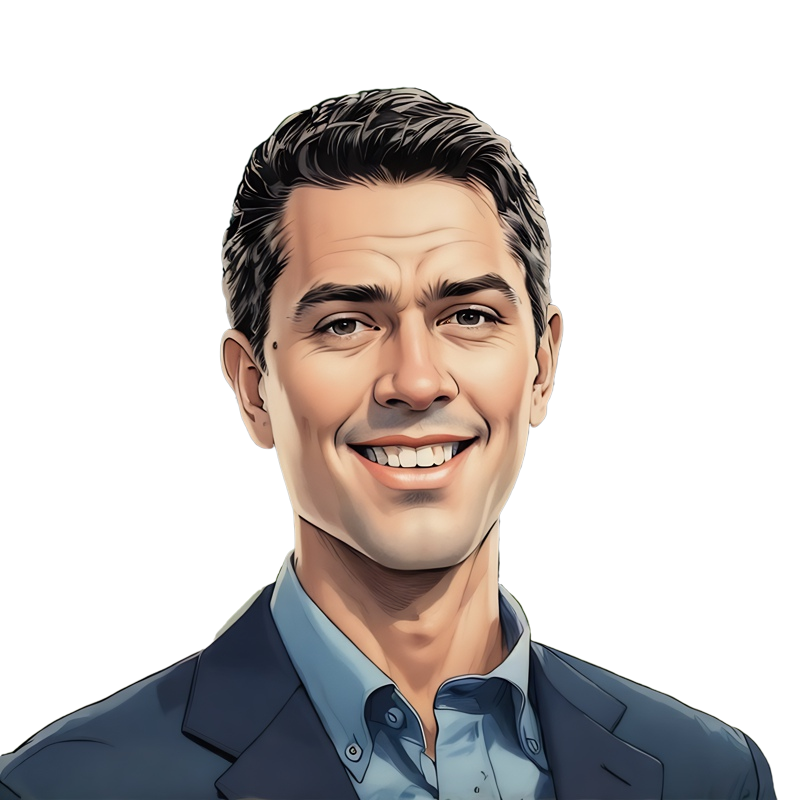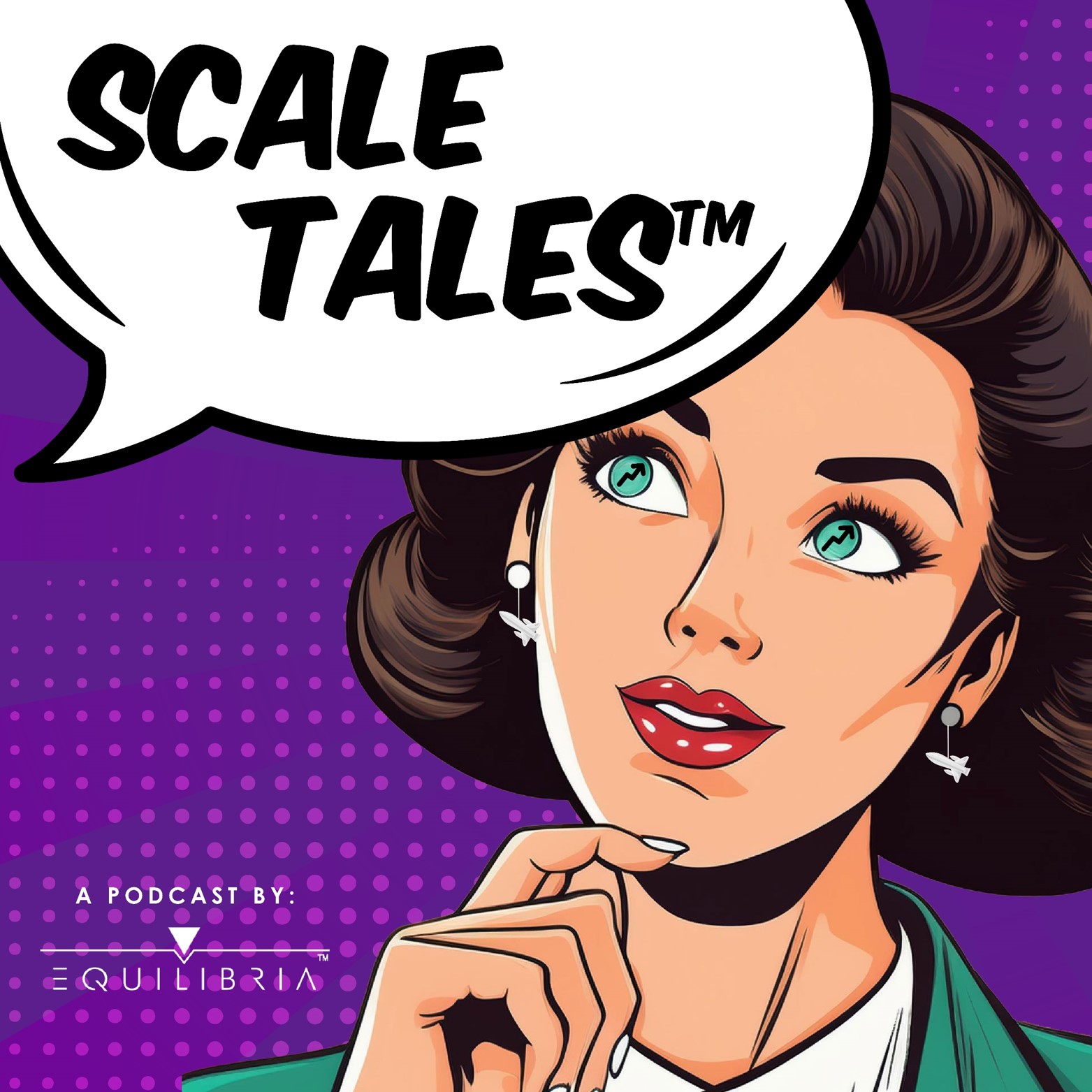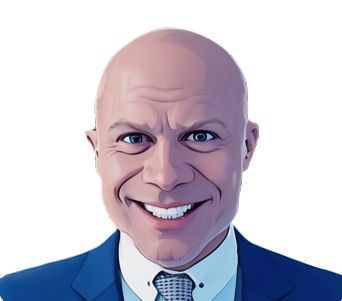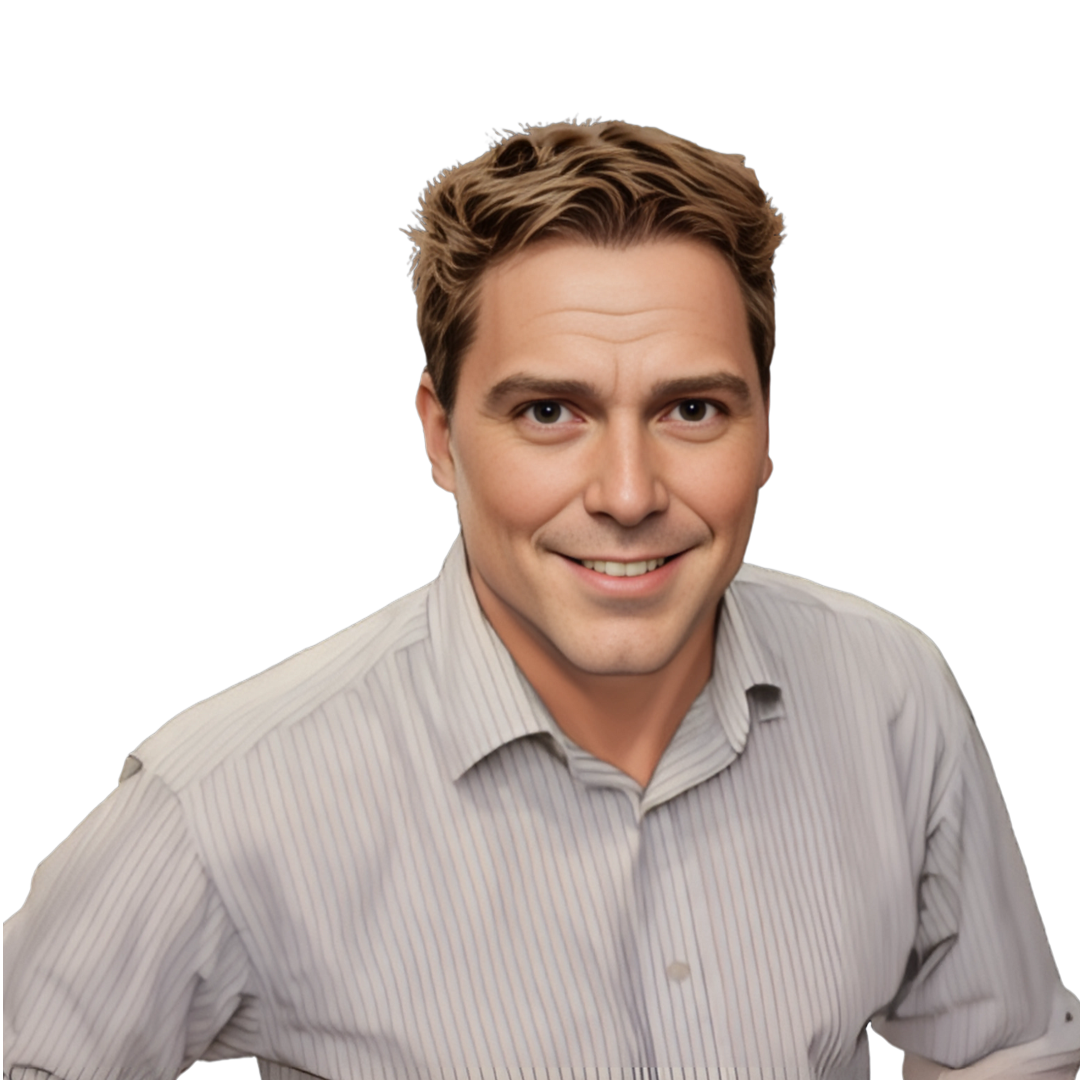Transcript
This podcast is brought to you by Equilibria, Inc. Did you know you can earn PDUs from listening to this show? It’s easy, accessible, and submitted directly to PMI. Keep listening to learn more.
Equilibria provides training to assist fast-growing companies to increase capacity and cash flow while operating at maximum performance. As a founder, leader, or project manager you know all too well that chaotic work environments aren’t sustainable. Visit EQBsystems.com to sign up for a free discovery call and start flowing today! EQBsystems.com.

Welcome to Scale Tales – the business storytelling podcast where entrepreneurs, executives and experts share firsthand accounts of those magical moments when they achieved something bigger than even they could have imagined.
I’m Alicia Butler Pierre. About 20 years ago, yes, I’m showing my age, but about 20 years ago I remember an email circulating about fear. It suggested rethinking that word as an acronym that stands for False Evidence Appearing Real. One good way to combat fear is education, maybe even exposure to the very thing you’re fearful of (provided, of course, it’s legal). This brings us to our latest scale tale. It’s an interesting story that lies at the intersection of the fear of managing your own money, frustration in not finding a suitable product to combat the fear, and…AI.
This is Ep. 40: How Alexander Harmsen Scaled PortfolioPilot.com to 30,000 Users in 18 Months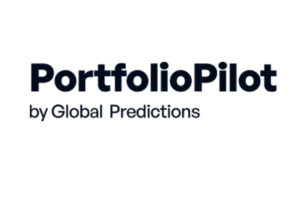 Hello, I’m Alexander Harmsen, co-founder and CEO of PortfolioPilot.com I’m currently in San Francisco, California and this is my scale tale.
Hello, I’m Alexander Harmsen, co-founder and CEO of PortfolioPilot.com I’m currently in San Francisco, California and this is my scale tale.
It all started in September of 2021. Over the years we’ve grown to about $30 billion of assets on the platform and over 30,000 users with portfoliopilot.com, your personal AI financial advisor. In early 2021, I had sold my previous company, and we bought a house in the Bay Area in San Francisco. We had kids, we have a two-year-old and a four-year-old.
We, my wife runs a startup in the biotech space called Very Simp Life. They’ve been wildly successful, and I was trying to figure out what exactly to do next. I took on my coding gloves
for the first time while I was prototyping different things, talking to investors, talking to other entrepreneurs, people that had sold businesses before, trying to talk to new customers, coming up with new prototypes and sort of around the same time I was talking to financial advisors and couldn’t quite shake the idea that I was speaking more to salespeople than financial experts.
I looked at Robo Advisors and Robo Advisors didn’t quite feel like the right thing for me it felt like lowest common denominator advice. I saw that there was a thousand different trading tools out there, it’s not really what I wanted to do portfolio management every single day, take care, react to markets and trade. What I really wanted was a coach to help me optimize my finances, to think about taxes and long-term scenario modeling and estate planning and thinking about viewing everything the same place and thinking about the right investment decisions and fees and dividends this is a complicated world.
There’s so many different opportunities, there’s so many things that you could be doing to optimize your finances. So the idea of having this personal coach along this journey with me made a lot of sense. The exit was good, but it wasn’t Bill Gates good. I couldn’t hire a team of experts around me to run a family office and take care of all this. And so instead what I ended up doing was building the software system, prototyping something, spent a couple months putting together this optimization engineering that would basically run through my entire finances, connect it to what’s happening in markets and then come up with a few optimization suggestions for what I could do next.
And that seemed to work pretty well. It was clunky and it would take four hours to run, and, but it would give me 10 suggestions and two of them would end up being, actionable and something I would actually, you know, do. But, it was good enough and there was tons of potential here to be able to turn it into a real product.
I started talking to friends and family and other people in my network and almost everyone that I spoke to, like the idea that AI or some automated software could connect to their personal life, to their finances, and actually just help them find optimization opportunities. Even now, a couple years later in 2025, I think we’re generally, not quite at the point in society where we can trust AI to manage our money for us. But the idea that AI can find these optimization opportunities feels very open.

In his attempt to find a solution to his own problem in finding tailored personal financial advice, Alexander unknowingly placed himself on a new software development path.
And then, honestly from there it sort of snowballed. It felt like on day one we had just me as the user and then we had 10 people and 100 people and, talking to 100 people. It was still,
pretty easy to talk to every single person, get feedback.
We had this beta trial going, trying to figure out, how would we actually give financial advice to people? How can we give recommendations? What will they react to? What won’t they
react to? There’s a lot of psychology involved there. That means that it’s much more than just objectively telling someone, what the quote, unquote perfect portfolio is. For many people,
there’s a fear and a greed to control. They are worried about just not having the right skills and expertise to be able to manage their own finances.
And so a lot of it is about instilling confidence and education. It’s about giving people advice at the right time without overwhelming them. And so we learned a lot from these early
feedback conversations. Then we spent a long time actually getting registered as a registered investment advisor with the SEC to be able to actually get some fiduciary responsibility for this completely automated AI powered engine that we had built. And then finally, September of 2023, we could start charging for the product. We had the regulatory approval to operate as an R.A. and we made our first dollar. Part of that was just finding the right partnership opportunities.
Part of it was just continuing to iterate with users. Actual referral traffic from existing users is a huge part of what allows us to scale and continue growing so quickly. And then basically
over the last 18 months we went from $0 in revenue to fairly significant revenue, 30,000 users and $30 billion of assets on the platform. In late 2024 we decided, in 2025, we’re, we’re not going to add any features to the product.
All we’re going to do is just improve the reliability, improve the user experience, make sure the advice keeps getting better and better. Really narrow down on the kinds of questions
we’re asking people so we can give them personalized advice. And so far this seems to be working really well. A lot of our focus is on these big partnerships. We actually bought a
media brand recently called diversification.com and so we’re scaling that up and you know, really focusing on giving very interesting, impactful stories through that for the long-term
investor in particular. It sort of feels like millennials have left human financial advisors behind in a really big way.
These are people that are becoming self-directed investors. They are managing more and more of their own money, but there’s more opportunities than ever before. So many
different things that you could buy or sell or own. How do you think about 529s and 401ks and 403s? And how do you think about Roth IRAs and conversions and emergency funds
and cash and brokerage accounts and crypto wallets and real estate and student debt and private equity? There’s so much out there. If we can make that a little bit easier for people, a
little bit more guided. That really feels like the like core mission that we’re on, especially over years, as this compounds and people can save, put more money and ultimately retire with more money in their bank account.
If that sounded like a mouthful, it was! And for good reason. I think Alexander is being really modest here, but let’s reflect on what he’s shared so far. In a span of two years, he sold a company and started a new one where he coded his way from no users and no revenue to over 30,000 users and tens of thousands of U.S. dollars monthly! That’s no small feat at all. It can take some entrepreneurs a lifetime to achieve this, if ever. Before diving further into the details of how he did it, I thought it would be helpful to understand more about him and his background. How does someone just decide one day to don coding gloves they haven’t worn in a while? Well, it turns out he’s always been interested in complex systems modeling.
What is complex systems modeling? To be honest, I had to get some research assistance from AI. Even the original answer was over my head, so I asked AI to further simplify the definition. Complex systems modeling is when you make a “…simplified version (a model) of something with many connected parts, to help others understand how the whole thing works together.” In other words, Alex is really smart and simplifying the complex is his jam!
I went to school for engineering, physics and economics. It was all about complex systems modeling. The idea that the real world is messy and complex and has these very complicated
relationships means that if you can model a piece of that, connect it to some commercial enterprise, then there’s real opportunities for efficiencies and gains and being able to help people better understand some scenario, whatever it is, could be financial optimization, could be drug development, could be autonomous vehicles. I worked at NASA for a little while on computer vision systems for robotics and flying autonomous vehicles.
I worked on various experiments for the International Space Station. I worked on a drone package delivery startup in San Francisco. Very early on, before Jeff Bezos said Amazon’s
really going to get into the drone package delivery game, we were really early on, we were working 12-hour days. This was super, super exciting, this whole new industry. And then in
2015, I started a company called Iris Automation. Iris Automation basically built autonomous vehicle software.
Very different than the financial advice and financial modeling that we’re doing right now. In some ways very similar. The same kind of complex systems modeling, also trying to take
some very difficult to model real world scenario and then turning it into something that’s practically useful for end users. I’m not a fan of just academia and research papers, just
presented conferences.
Everything I do has to have some real-world impact, ideally at a massive scale. Iris Automation, we raised about $25 million. We scaled up over the course of seven years to three offices. We got regulatory approvals in nine countries, we had hundreds of clients, we set up massive partnerships. And we’re potentially the first autonomous vehicle company to
really achieve some significant commercial scale. Ultimately in 2021, we ended up getting acquired by a big partner of ours, backed by a private equity firm. And, that’s where I found myself, basically with a little bit of free time trying to figure out what to do next.
And that bring us to back to September 2021 where Alexander’s scale tale begins.
Things move very quickly with Iris Automation. With my previous company, we were working on deep learning models before it was called deep learning. We were working on, AI before
was really called AI. It was like neural nets and expert systems and really cutting edge. And honestly, a lot of it is just fun, right? I’m just like, naturally curious.
I sometimes think that one of the best parts of running these companies is that I get to hire some, really, really smart people and I just learn from them every single day. And so, I feel
like I’m constantly improving. It’s everything. Part of it is staying on the cutting edge with AI and software and what’s happening in modeling, but the other part of it as well is marketing
is changing in a massive way.
How do you think about media now that we have this new diversification.com brand? How do we think about selling and scaling up and starting something from scratch a second time?
Did things completely differently this time around. Fundraising and, convincing people to come along for some journey like this. I’s exciting and it kind of feels like my role changes every six months so I never really get a chance to get bored.
And that’s a good thing because the constant changing of his role has kept Alex on his feet. Coming up after the break, he’ll share details about how he built his all-star team of project managers and subject matter experts and kept them motivated despite them having to accept significant payroll cuts. He also has a special offer to share with you.
Are you a certified Project Management Professional? Just imagine, you can literally listen and learn while you earn credits. Yes, even while you’re taking a long walk, driving to or from work, even while you’re on an airplane. The good thing about our podcast episodes is that you don’t have to watch them in order to earn your PDUs.
In three easy steps – Visit ScaleTalesPodcast.com, sign up for a membership, take a short quiz and we’ll submit your credits to PMI. Yes, it’s really that simple and all at a price that makes this information accessible wherever you are. No gimmicks, no games. It’s really that simple! ScaleTalesPodcast.com.
Welcome back! Before the break, you heard from Alexander Harmsen and how in just two years he built and scaled portfoliopilot.com to over 30,000 users! That’s any product manager and software developer’s dream! He leveraged his complex systems modeling background to the world of personal finance and, along with a dynamic team, created a product that puts the decision-making power back into the hands of people seeking solid, trustworthy financial advice. The key word there is “trust.” So, how did they achieve this feat in such record time? Well, business infrastructure played a huge part. So did project and product management.
Here’s Alex.
It’s a lot of fun. It’s also very scary because you don’t know the outcome of the project you don’t know exactly what’s going to happen, what it’s going to turn into. You hope that the
right product and the right go-to-market strategy is simply just one pivot away, but it could be 20 pivots away. I was pretty convinced early on that we could take hedge fund type portfolio management strategies and bring them to the masses in some way.
It felt like there was this very personal challenge for me about like, “Yeah, I’m not really getting any like proper personalized advice. Even though the tech should be able to facilitate
something like that.” I spoke to many financial advisors. At first, we thought maybe we can just sell this to financial advisors outright. But you know, I wasn’t like really excited about that path. I don’t think we got quite the right traction, actually resisted building a consumer fintech product for quite a while.
Felt like there’s already so many consumer fintech products out there, you know, it’s like hard to, hard to compete there. So if we do something in the space, then it has to be really differentiated. We need to build something that’s hard to replicate. And so we started thinking more and more about how can we use some of these early recommendation engines and models that we built to be able to offer something that doesn’t exist in the world of financial advice, in the world of personal financial planning, tax optimization, all that.

And, I think that, you never really know what people are willing to pay for unless you actually ask them to pay for your product. And so a lot of the early days was trying to get a prototype of something with like barely work. It would feel like it was held together by duct tape. And then we would ask people, Are they willing to pay for this? I think that’s a very different question than, Would you pay for this? Or, do you like this? Is this useful for you?
But actually getting people to whip out their credit card is another level of understanding, about what people are actually wanting, what’s actually useful for these folks. And so I think
to get the first 10 people to actually pay for portfoliopilot, took significant effort and it was a lot of back and forth with folks to try to figure out, what kind of advice do people really want?
Are they willing to pay for a portfolio tracker?
Not really. There’s, you know, other free portfolio trackers out there. Are they willing to pay for retirement calculators and scenario planners? Not really. There’s free retirement calculators online. Are they willing to pay for sector breakdowns and asset class allocation? not really. The thing that people really seem to be willing to pay for was the actual advice.
Look at my whole portfolio, understand my long-term and my short-term plans, give me some feedback, break it down to the different charts, map it to what’s happening in the stock
market, to taxes, and then give me suggestions like very personalized, like “You should sell x.” That’s the thing that people seem to be really willing to pay for.
But Alex and his team only knew the answers to those questions once they had a prototype to demonstrate to customers. Only then could they ask these prospective customers or users to test the prototype. Once they knew what users would pay for, Alex and his team had to legitimize portfoliopilot to make sure they did not get in trouble for providing financial advice without official U.S. government registration.
Just at that point, before we could actually charge for that product, we needed to become a registered investment advisor with the SEC so that we could take on this fiduciary responsibility so we could give actual real advice. It kind of became apparent at some point that all the interesting insights that we could bring to people was behind this wall, was behind this barrier of getting the regulatory approval, for a good reason, but kind of came to this fork on the road.
Like if we’re really going to do this, then we have to get this regulatory approval, create an auditing program, you know, have a paper trail, we need to, spend money on lawyers and
training and compliance and I felt like the choice was actually like fairly clear to us because that’s really where the white space was. That’s where, you know, as far as I understand, no one else is doing the kind of thing that we’re doing and are automatically giving advice like this.
That’s where we thought we had this massive opportunity. And it’s not just like one small niche application. You know, if we get this right and if we create it, make it simple enough for people to onboard to, if we make it easy enough to understand, if we meet people at the sort of right level of technical expertise, be that beginner or expert, then, why wouldn’t every American use PortfolioPilot, at a minimum, to get a second opinion on their finances and ideally to, help them optimize their financial situation a little bit every single month for the rest of their life?
Getting every American to use PortfolioPilot is a bold, but attainable ambition. Think about how ubiquitous digital products like Facebook and physical products like Coca-Cola’s massive portfolio of beverages are. Realizing bold ambitions is not a solo endeavor. It requires having a team. And, it begs the million-dollar question – how did Alex keep a team that he’s already described as being at the top of their respective fields, motivated over two years with lower pay and limited resources?
It’s an excellent question, right? For two years in the startup world, they call this “wandering in the wilderness.” You don’t know exactly where you’re going to go yet. You don’t know where you’re going to end up. There’s lots of different paths that you can possibly go down. It’s. There’s massive risk to that as well. For me, personally, for early employees. People aren’t getting paid as much as they would be if they’re working at a Fortune 500 company or, Google or Meta. I think it takes a special kind of person. I probably wouldn’t be that good at working, one of these massive companies actually really like the risk and figuring things out and the fact that there’s this uncertainty.
It’s a little bit scary to see the money in the bank, very slowly, month after month running out. I think that, like, a big part of the motivation that comes along with that over those years is the fact that you have some eureka moments every week. So, it’s very quick to pivot from ideas to idea. You have a customer conversation and they said something interesting, right? They said,
“You know, it’s cool where you build, but, why don’t you show me the sector breakdown, and you show me I have 21% tech exposure, but if you could somehow figure out, for me, what would be the optimal amount of tech exposure, I should have that’s interesting.”
And then you think, That’s kind of interesting. We could take it a step further and actually give advice. Wait, can we actually do that? Are we allowed to do that? What kind of regulatory approvals will we need to get for that? How will we even figure out what the optimal amount is? How do we convince somebody that this is the optimal amount? Is it justBob that wants this or does everybody want this?
Let’s have another 10 conversations with some of our other beta testers and propose this idea and design the little mockup. And in the early days there’s this crazy pivots and excitement and insight can strike at any moment. I think there’s something infectious about being part of that environment. And then I think that for some people it’s also just about legacy and being part of something big. It would be amazing to be part of the first 10-person team at Google. Not just because you’d be filthy rich now, but because you had been part of building something world-changing. And so I think all of those things are part of what keeps the early team motivated.
Alex is being a bit modest here – it also takes a great leader, like Alex, who can keep people motivated beyond a shared vision to consistently show up, do stellar work, and have a positive impact on the masses. And he’s right – taking on high risk with a reduced salary isn’t for everyone. It takes a special kind of person to be on that kind of team.
Reflecting on what Alex just said reminded me of the book Blue Ocean Strategy. By breaking away from the shark-filled red ocean of stereotypical consumer fintech products, PortfolioPilot.com created a blue ocean. An ocean where they swim with dolphins, making their competition irrelevant by deeply engaging with their potential users.
The results speak for itself – 30,000 users in just 18 months. That’s incredibly impressive. As we started to wrap up, I asked Alex if he has any resources he’d like to recommend for founders, project, or product managers launching new initiatives or products whether in startups or established companies.
There’s a few things that come to mind. One part of it which is I have probably a thousand little notes right now just in Google Keep. It’s completely unorganized, and I think that’s perfectly fine. I think there’s a certain freedom with that. We’re trying different things and, some of it feels random and, I actually think it’s worth completely embracing that. And it’s often the case that we throw out everything and we say, let’s clear the backlog and just start from scratch.
What’s truly the most important thing right now? There’s always 100 little fires burning, and we’re typically only addressing like the one big fire right in front of us. I think that’s just part of the game. That’s perfectly fine. It constantly helps us focus on what’s most important and what’s most differentiated for us. As you can imagine, the actual financial advice and the personalized recommendations is a huge part of what’s currently most important, but what I also assume will be most important, you know, four years down the road.
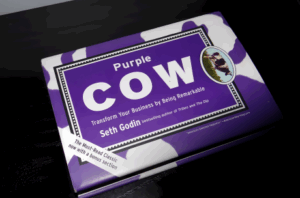
One book that I really, really like is called Purple Cow. It’s famous. I’ve read it a few times now, and I kind of feel like every time that I read it, there’s some new insight or it helps me think about the problem in a new way. The core of this book, is that you don’t have that much time to get people’s attention. And, in a world with social media and so much noise, you need to do something differentiated.
A core story in the book is about the road trip across America
How many countless cows do you see along the way? It’s not really that interesting. If one cow in particular, painted purple, I bet you and your family, you and your friends are going to talk about that one purple cow 10 years from now. There’s gotta be ways to stand out to make it very easy for people to share your idea or the thing that’s unique about what you’re doing. And as much as possible, it shouldn’t just be some marketing gimmick.
Should be tied to like some core value prop in the business. The idea that you could just answer a few questions, take a screenshot of your account and start getting some optimization suggestions on your finances. You know, something that could save you thousands of dollars. I haven’t heard that come up anywhere else that feels so differentiated, that feels so unique, that I think it’s a big part of the reason why it’s easy for people to talk about this, to share.
Also just feels like there’s so little downside, right? Spend five minutes, get a report, see if there’s anything to fix. Best case scenario, more money in my pocket. Worst case scenario I realized I’m in a pretty good place financially.
It just dawned on me that with all the talk about PortfolioPilot.com we haven’t talked about how much it costs.
We have a free tier. The free tier offers basically free portfolio tracking, free portfolio analysis. We give you this report card about what’s working, what’s not working. And so really no reason to not sign up and get that assessment. We charge $ 29 a month for our gold tier monthly. $20 a month if you buy the annual subscription. Really not breaking the bank. Ideally, the product pays for itself, and you know, that gold tier gets you access to the kinds of fiduciary financial advice that we’ve been talking about.
And in case you’re wondering how you can contact Alex…
You can find me on LinkedIn. Alexander Harmsen Twitter – my handle is @AlexanderHarmsen. Or simply just sign up for the product. We think that the difference between where we’re at right now and ringing the bell. The New York Stock Exchange or the NASDAQ is, you know, another thousand iterations. And so I’m gonna talk to a lot more people. We’re gonna keep pushing out changes as we go.
You’ve probably already guessed by now that those changes Alex is referring to will be based on feedback from additional paid customers. This is your chance to be a part of making history in the personal finance space! Alex is offering a free month of the Gold tier of portfoliopilot.com, but, yes there’s a but…it’s only available to our members. In fact, our members can also see Alex’s demo of portfoliopilot.com in our private portal. How do you become a member? Well, you can start by clicking the link in the show notes, the one that asks you to become a member
Yeah! Let’s do it!
Thank you for co-signing that, Alex! Now, back to you. Here’s a recap of some lessons learned from Alex’s journey as he scaled from zero to 30,000 users.
- Test, test, test! Continuous improvement over perfection.
- Get as much feedback as you can from beta testers and early adopters. Aggregate that feedback to determine and prioritize what you should consider to make your product or service better.
- Ask those beta testers and early adopters, “Are you willing to pay for this?” This is much stronger than asking, “Would you pay for this?” I’d also like to add a part two to that – ask, “How much would you pay for this?”
- Get as many referrals as possible from satisfied customers. This is free advertising!
- Obtain any certifications, registrations, and/or licenses required to legally operate. This goes a long way in establishing credibility.
- Build a team of people who have passion and are willing to be a part of something good for less pay, especially in the early stages of a project.
- Avoid mental gymnastics. Make it easy for people to remember you and your product or service. This is especially important when you’re developing and managing something designed to appeal to the masses. Things like overly technical jargon and difficult website or app navigation can ruin user experience.
Let’s give it up for Alexander Harmsen! Thank you for sharing your scale tale with us. You can access links to the resources he shared in this episode’s show notes at ScaleTalesPodcast.com. Again, that’s ScaleTalesPodcast.com.
As a reminder, we offer live webinars where you can learn how to do things like apply Blue Ocean Strategy concepts to make competition irrelevant and automate project management to implement strategy. But that requires a membership, which starts at only $9.99 per month. That gives you a backstage pass where you can access things like the video demonstration of PortfolioPilot.com as well as getting the codes to access special offers. Click the link in the show notes to sign up for a membership today!
If you are a PMP interested in earning a PDU for listening to this episode and others, then you can also visit ScaleTalesPodcast.com. Once you’re there, click the button that says, “Get CEUs/PDUs Credits,” sign up for a membership, and we’ll submit your earned credit to PMI for you.
Thank you for listening! If you learned something valuable from this episode, please leave us a five-star rating and review wherever you’re listening.

I’m Alicia Butler Pierre and I produced and narrated this episode. Additional voiceover by Clarence Levy III. Audio editing by Olanrewaju Adeyemo. Music production and original score by Sabor! Music Enterprises. Video editing by Gladiola Films. Show notes by Hashim Tale.
You’ve been listening to Scale Tales, a podcast by Equilibria, Inc.



 Hello, I’m Alexander Harmsen, co-founder and CEO of PortfolioPilot.com I’m currently in San Francisco, California and this is my scale tale.
Hello, I’m Alexander Harmsen, co-founder and CEO of PortfolioPilot.com I’m currently in San Francisco, California and this is my scale tale.



